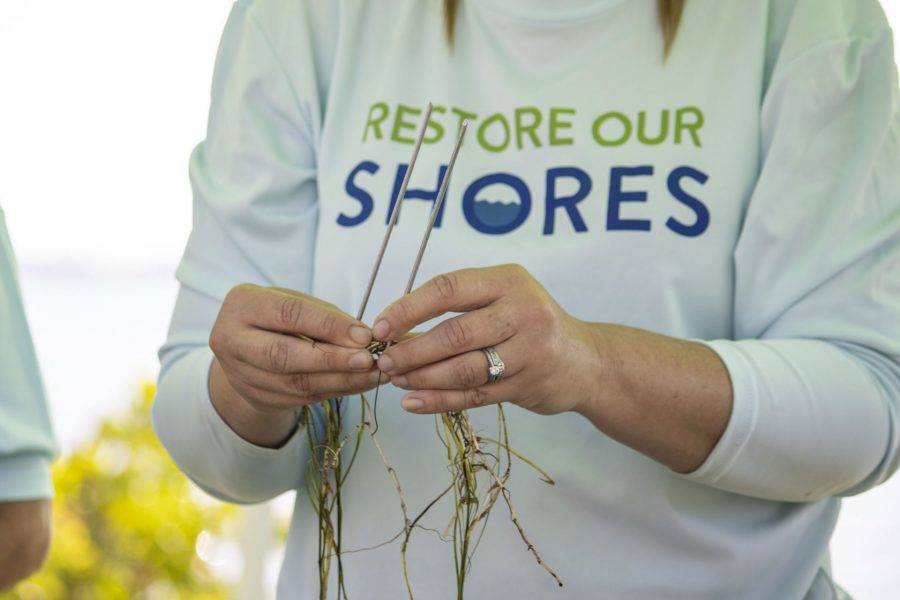The Restore Our Shores (ROS) conservation program, in partnership with the St. Johns River Water Management District and the Indian River Lagoon National Estuary Programs, has begun planting small seagrass beds in the Indian River Lagoon in Florida. Twenty-four seagrass beds are being planted in 17 locations to monitor the sites over the next year to determine the best locations for more extraordinary seagrass restoration efforts. Community members fund this pilot project, and the ROS volunteers are helping with initial plantings and monitoring. The seagrass restoration is part of a broader effort to reestablish organisms crucial to a balanced lagoon ecosystem. However, work is still required to reduce the nutrient pollutants that kill off native seagrasses.
The Indian River Lagoon is a crucial waterway on the East Coast of Florida. It is home to abundant marine life, including manatees, dolphins, and sea turtles, making it a significant ecological and economic resource. Unfortunately, the lagoon has suffered from the negative impact of human activities, such as pollution and habitat degradation.
Planting Seagrass: A Solution to Restore the Indian River Lagoon
Seagrass is a critical component of the lagoon’s ecosystem, providing a habitat for many species and contributing to the overall health of the waterway. However, seagrass beds have been diminishing over the years due to various factors, including dredging and pollution. To combat this problem, planting seagrass has become a popular method to enhance and restore degraded seagrass beds in the Indian River Lagoon.
Benefits of Seagrass Planting
Seagrass planting offers numerous benefits for the Indian River Lagoon. Firstly, it contributes to the waterway’s ecological balance by providing habitats for various species, such as the endangered manatee. Additionally, seagrass improves water quality by filtering sediments and excess nutrients, reducing harmful algae, and promoting healthy aquatic vegetation growth. Furthermore, seagrass helps reduce shoreline erosion by stabilizing sediment and reducing wave energy.
The Planting Process
The process of seagrass planting is straightforward but requires careful management. The “propagation unit,” consisting of a section of seagrass and sand, is produced in a greenhouse nursery. After it has reached a suitable size, the unit is then transplanted into a seagrass bed using a tool called a seagrass planter. Once the unit is set, it must be monitored for water clarity, oxygen levels, and grazing pressure until it becomes established.
Conclusion
Seagrass planting has proven to be an effective tool in restoring degraded areas in the Indian River Lagoon. It provides essential benefits for the ecosystem by promoting the growth of new healthy seagrass beds and contributes to the overall health of the waterway. By supporting seagrass planting efforts, we can ensure a more sustainable future for the Indian River Lagoon and the species that depend on it.

